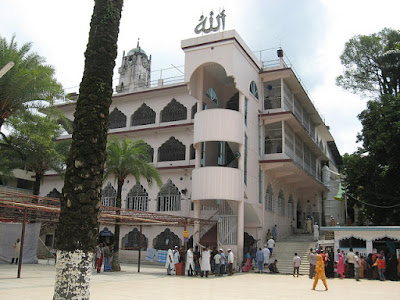 |
| Hazrat Shahjalal Mazar |
It was named after Saint Shah Jalal, who has celebrated Sufi Muslim figure in Bengal and he was buried in Mazar Sharif Sylhet. Now, I am telling for Hazrat Shahjalal Mazar Sharif of Sylhet. Shah-Jalal-Mazar is knowing about me that it is saying of Most beautiful Mazar. Strategic location in Asia. The city also serves as one of the many tourist attractions because of its famous shrines as well as the Muslim and Hellenistic archeological.
 |
| Tomb of Bibi Pari |
There is another small grave in the southeastern corner room.
 |
| Lalbagh Fort |
This nation has governed by Buddhist, Hindus, Muslim and British. There have a golden history of its past. There are numerous historical spots in Dhaka, Rajshahi, Bogra, Dinajpur, Comilla and other piece of Bangladesh. Principle attractions are Mosque and Mazar, Hindu sanctuaries, Churches, Buddist Monastery and recorded structures. Bangladesh appears to be as like as God’s own gave painting. different colors, society and memorable sites are here and there in this little nation. So Bangladesh has been highlighted on the world’s tourists maps. Archeologists after a recent excavation discover continuity of the main fort walls towards east below Shaishta Khan Road and opine that the present area of Qilla only represents half portion as planned by Prince Azam Khan.
 |
| Ahsan Manzil |
That girl also committed suicide in anger and sorrow. There was a grave of Sheikh Enayet Ullah in the north-east corner of the palace yard.
Most Beautiful Place of Mahasthangarh
 |
| Mahasthan garh |
The village Mahasthan in Shibganj thana of Bogra District contains the remains of an ancient city which was called Pundranagara or Paundravardhanapura in the territory of Pundravardhana. The excavations have led to the recovery of a large number of items, a few of which are listed here. Inscriptions: A 4.4 cm x 5.7 cm lime stone slab bearing six lines in Prakrit in Brahmi script, discovered accidentally by a day labourer in 1931 was an important find. The text appears to be a royal order of Magadh, possibly during the rule of Asoka. It dates the antiquity of Mahasthangarh to 3rd century BC. An Arabic inscriptional slab of 1300–1301 discovered in 1911–12 mentions the erection of a tomb in honour of Numar Khan,
who was a Meer-e-Vahar (lieutenant of the naval fleet). A Persian inscriptional slab of 1718–19 records the construction of a mosque during the reign of the Mughal emperor Farrukhshiyar.
 |
| Pundranagara |
Curzon Hall, named after Lord Curzon (Viceroy and Governor-General of India, 1899 – 1905) who laid the foundation stone in 1904, was originally intended to be a town hall.
No comments:
Post a Comment